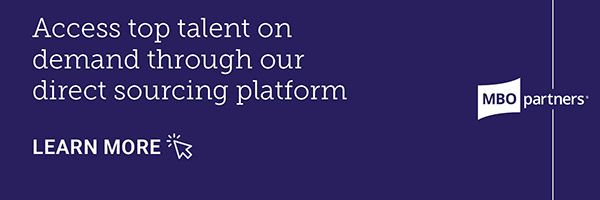5 Dimensions that Impact Corporate Agility

- Corporate agility is a requirement for success in the future of work.
- Enterprises that are quick, resourceful, and ready to adapt are going to be the winners.
- Leaders must understand where the company sits across five dimensions that impact agility.
The Merriam-Webster online dictionary offers two definitions of agile:
- Marked by the ready ability to move with quick easy grace
- Having a quick, resourceful, and adaptable character
In the context of an enterprise, the terms “ready ability,” “quick,” “resourceful,” and “adaptable” accurately describe corporate agility.
Along with many other business pundits, we consistently emphasize corporate agility as a requirement for success in the future of work. The speed of market evolution will not decrease or stay static, and enterprises that are quick, resourceful, and with a ready ability to adapt are going to be the winners.
This is not news to corporate leaders. The quest for agility has been going on for decades, creating a large niche in the professional services industry and providing expert assistance with organizational change, process improvement, and other enterprise structure and function needs.
Such expert assistance can be invaluable, but getting the best outcomes from third-party services requires self-knowledge first. Leaders must understand where the company sits across five dimensions that impact agility: people, process, technology, organization structure, and culture.
1. People
The people dimension comprises three different groups: workers, managers, and leaders. Each group must express agility in their roles, which doesn’t always happen. For example, you might have workers with excellent soft skills and leaders who are forward-thinking and committed to fostering agility in the workforce, but if your management layer still micromanages or uses a command-and-control style, you won’t be able to get where you need to be in this dimension.
2. Process
Six Sigman, lean thinking, and other models have been used over the years to improve processes. Whatever the model, the watchword for agility in this dimension is streamline. Become more adaptable by cutting out the unnecessary aspects of processes across all corporate functions. An example of this is the onboarding process for independent talent, which we have consistently recommended be fast and straightforward to make it easy for your independents to get to work quickly.
3. Technology
While AI is the most recent technology touted to make a positive impact on corporate agility, it’s part of a line of technologies that have had the same potential over several decades. The application of these technologies to improve agility has received an enormous amount of ink in business media. It can be easy to assume that this is the only dimension to focus investment on to get there, and this is a mistake. Technology alone, or primarily, cannot establish sustained agility.
4. Structure
The familiar hierarchical organization structure is not the stuff of agility. An agile business structure is flexible, adaptable, and able to respond to a continuously changing market. Flat hierarchy and decentralized decision-making are two characteristics of this structure. An optimized workforce comprised of cross-functional and autonomous teams, key to success in the future of work, requires this kind of structure.
5. Culture
Organizational culture is another “of course” feature of corporate agility. Some leaders assume that having the right people, processes, and technology will automatically lead to the right culture. This is a mistake. An agile culture rests on a set of core values, behaviors, and practices that allow the enterprise to thrive in an uncertain and volatile market. In promoting, encouraging, and rewarding innovative thinking in the workforce, an agile culture enhances trust, loyalty, and a commitment to continuous learning and improvement. Leaders must proactively take actions that move company culture in the right direction.
Establishing sustained corporate agility requires attention to all five dimensions. Focusing resources on only one or two—people and technology, for example—won’t get the organization where it needs to be. At the same time, making progress across all five takes time, planning, and very likely third-party assistance. To make a start, understand where the enterprise sits in all five dimensions on a spectrum of “not agile” to “sustainably agile” and how each dimension impacts the others. Then create and deploy a plan that works over time to move the enterprise toward agility across all five.
Categories
Subscribe to the Insights blog to get weekly insights on the next way of working
Source, engage, and manage top talent talent through MBO's direct sourcing platform
Learn more about MBO
Learn how to start, run and grow your business with expert insights from MBO Partners
Learn how to find, manage and retain top-tier independent talent for your independent workforce.
MBO Partners publishes influential reports, cited by government and other major media outlets.
Research and tools designed to uncover insights and develop groundbreaking solutions.



